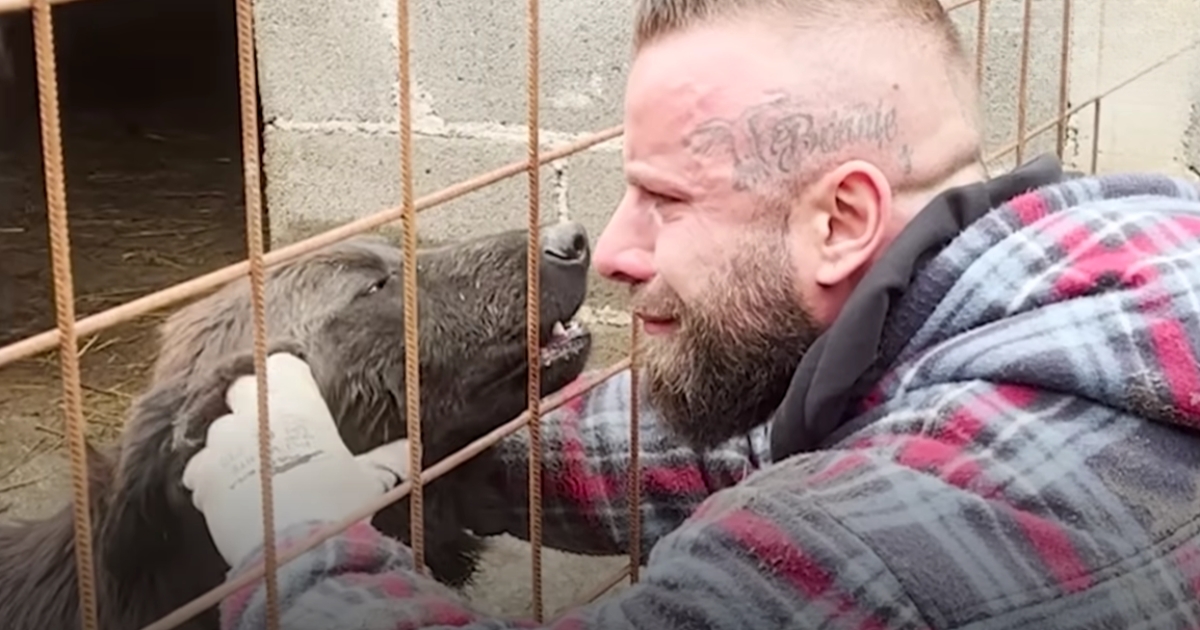
As pet parents, gaining a deep understanding of your puppy’s reproductive cycle is paramount for their overall health and to effectively prevent unwanted pregnancies. Familiarizing yourself with the nuances of when a puppy can conceive is essential for providing appropriate care and making well-informed decisions regarding spaying or breeding.
Puppies can reach sexual maturity and become capable of pregnancy at various months of age, often dictated by their breed and size. For instance, smaller breeds may enter their first heat cycle and achieve sexual maturity at an earlier age, sometimes as young as six months, while larger breeds and giant breeds might not reach this stage until closer to two years of age.
The journey through a dog’s heat cycle, particularly for a female puppy, involves distinct stages, each marked by specific hormonal and physiological changes. Observing signs like bloody vaginal discharge or behavioral shifts can indicate the onset of sexual maturity, signaling the need for pet owners to consider the best way to manage their dog’s reproductive health, whether through timely spaying, vigilant supervision during heat cycles to avoid contact with intact male dogs, or preparing for a planned and healthy pregnancy.
By thoroughly understanding these aspects of canine reproduction, pet owners can ensure they are taking proactive steps to manage their young dogs’ health, mitigating the risks of early and unwanted dog pregnancies, and ensuring the long-term well-being of their cherished companions.
Learn canine reproduction to ensure young dogs’ health and well-being
Recognizing the Signs of Sexual Maturity
Puppies reach sexual maturity at different ages, usually between six months to two years of age, depending on their breed and size.
Larger breeds like giant breeds may mature slower and reach sexual maturity closer to two years, while smaller breeds can experience their first heat cycle as early as six months of age.
The first sign of sexual maturity in female puppies is the onset of the first heat cycle, i.e. the first time your dog gets her “period” or goes into oestrus. This is characterized by behavioral changes and physical signs like a bloody discharge from the dog’s vulva and giving off all sorts of enticing hormones, indicating to male dogs they are ready to mate.
During this time, unspayed dogs may show signs of heat, attracting unneutered and neutered male dogs due to the release of different pheromones.
Please do note that this is a dangerous time.
Female puppies’ first heat signals sexual maturity with distinct signs
Understanding the Dog’s Heat Cycle
The dog’s heat cycle is an intricate process, encompassing multiple stages, beginning with the proestrus stage, marked by signs such as bloody vaginal discharge and swelling of the rear end. This phase generally persists for 9 to 10 days, setting the stage for the estrus phase, during which the female dog becomes receptive to mating. Dog owners should be vigilant in observing these signs, as they are crucial for effectively managing the pet’s reproductive health.
Following the proestrus is the estrus phase, during which the female dog is fertile and can become pregnant if mated with an intact male dog. This stage is characterized by a continuation of vaginal bleeding, although it may become lighter and change in color, and the dog’s behavior may include more pronounced signs of heat, such as flagging or lifting her tail to signal to potential mates.
Understanding these phases and their duration, including the subsequent diestrus and anestrus stages, helps dog owners anticipate and manage their dog’s cycle, preventing unwanted pregnancies or planning for breeding at the right time. Recognizing and responding to these reproductive stages ensures the health and well-being of both the dog and any potential offspring.
Understanding dog estrus phases aids in managing cycles and health.
The Ideal Age for Pregnancy
Determining the ideal age for a dog’s pregnancy involves considering both physical maturity and breed-specific characteristics. Technically, a puppy can conceive during her first heat cycle, but it’s advisable to wait until she’s older and fully matured, both physically and mentally – if at all.
Do remember, we should only ever support ethical and responsible breeding of dogs.
For smaller breeds, the best time to consider breeding is often after their second heat cycle, ensuring they have reached an adequate level of growth and are better prepared for the rigors of motherhood. Larger breeds, on the other hand, should ideally wait until they are at least two years of age before breeding. This delay allows these larger dogs to attain their full size and ensures they are mentally ready to handle the demands of pregnancy and subsequent nursing.
For giant breeds, the wait might be even longer, as their growth and development take more time. This approach helps prevent health issues related to early pregnancy and ensures the well-being of both the mother dog and her future litter of puppies. Understanding the dog’s breed, potential health risks, and the best practices for breeding are crucial for pet owners contemplating pregnancy for their dogs, thereby fostering a safe and healthy reproductive journey.
Pregnancy in Dogs: What Pet Parents Should Know
If you suspect your dog might be pregnant, there are several signs and changes to watch for, particularly as the pregnancy progresses. These signs can include:
Changes in Behavior: Your dog may become either more affectionate or more withdrawn. Some dogs might seek more attention from their owner, while others might prefer to be left alone.
Decreased Activity: If your usually playful dog is suddenly more lethargic, this could be a sign of pregnancy.
Changes in Appetite: Pregnant dogs often experience changes in appetite, eating much more than usual or sometimes showing a decrease in appetite.
Enlarged or Discolored Nipples: The dog’s nipples may become more prominent, larger, or take on a slightly darker shade than normal as they prepare for milk production.
Weight Gain and Enlarged Abdomen: As the pregnancy advances, an increase in weight and a noticeable swelling in the belly can be seen — usually after the third or fourth week of pregnancy.
Nesting Behaviors: As the birth approaches, a pregnant dog might start to exhibit nesting behaviors, such as shredding bedding materials and arranging them to prepare for whelping.
Vaginal Discharge: Slight vaginal discharge, which may change in color from clear to a milky substance, can occur in later stages of pregnancy.
Fatigue: Increased tiredness or lack of energy is common as your dog’s body is dealing with the demands of supporting a pregnancy.
Do note, however, that these signs can also be indicate other health conditions, and that a few of these signs alone do not necessarily mean that your dog is pregnant. Pregnancy in dogs lasts approximately 63 days (9 weeks), and the only way to reliably confirm a pregnancy is by visiting a veterinarian. Vets can conduct an ultrasound to detect puppies, feel the abdomen, or carry out hormone tests to check for pregnancy-related changes.
Dog pregnancy signs require veterinary confirmation via ultrasound or tests.
Preventing unwanted pregnancies in dogs
Be Responsible: First and foremost, be responsible. If you know your dog is in season, due her season, or you’re even remotely concerned, consider renting a secure field or leash walk your dog on the streets where there is minimal likelihood of encountering roaming intact males.
Don’t Leave Them Unattended: If your yard isn’t secure, it’s a great idea to stay with your dog. This is something we can easily overlook if we’re using invisible fences or GPS based fences, but they’re no longer going to be safe in their yard by themselves
Be Aware Of The Risks: Your dog is going to attract local males. If you live remotely, you may underplay this, but do be aware scent can travel miles. These males can and will fight over your girl, so be aware it’s dangerous for you, your dog, and other dogs.Remove male dogs from the home: If you cannot entirely separate them (and it’s a complicated process as an intact male will find it very difficult to control himself and act sensibly) it may be best to ask a friend to look after your boy to ensure you avoid an accidentally pregnant dog. Know Your Options: If your dog does get pregnant, or you feel they may be, talk to your vet about the options for terminating the litter, there are various ways this can be done.
Remember! We do not need more puppies, leave the breeding to the experts!
If dog mates, discuss litter termination options with your vet.
Myths Surrounding Female Dogs & Pregnancy
Let’s address and debunk some common myths that wrongly promote pregnancy in female dogs:
Myth: A Female Dog Should Have One Litter Before Being Spayed
Truth: There’s no medical or behavioral benefit to a female dog having a litter before being spayed. In fact, spaying before the first heat significantly reduces the risk of mammary cancer and eliminates the risk of uterine infections and complications related to pregnancy.
Myth: Pregnancy and Motherhood Calm Down a Hyper Dog
Truth: Pregnancy and motherhood won’t fundamentally change your dog’s personality. While hormonal changes can temporarily affect a dog’s behavior, long-term temperament and energy levels are more likely influenced by genetics, environment, and most importantly – training.
Myth: Dogs Need to Experience Motherhood to Be Fulfilled
Truth: Dogs do not have a psychological need to reproduce. The drive to mate is instinctual, not emotional. Ensuring your dog has a fulfilling life involves engagement, exercise, and affection, not necessarily puppies.
Myth: Breeding a Dog Enhances Its Health
Truth: Pregnancy and whelping (giving birth) present significant health risks to female dogs, including complications during birth and the risk of infections. Additionally, the process of raising puppies is physically demanding. Spaying offers health benefits including the elimination of risks associated with pregnancy.
Myth: It’s Beneficial for Kids to Witness the Miracle of Life
Truth: While educating children about life processes is important, promoting pet pregnancy to teach this lesson is irresponsible. There are many ways to educate children about the miracles of life without potentially contributing to pet overpopulation or risking the health of a pet. Responsible pet ownership and discussions or videos about animal development can be equally educational without the risks involved in breeding.
Myth: It’s Best to Spay a Dog Before Its First Heat Cycle
Truth: the most recent research suggest that waiting until after the first heat, or even longer, might have benefits and pediatric spays can be very problematic, particularly for certain breeds or sizes of dogs. Early spaying can impact a dog’s physical development, pointing to potential risks such as affecting bone growth and leading to joint problems, especially in larger breeds. They also mention possible links to increased risks of certain types of cancers and conditions due to the hormonal changes that occur with spaying. It’s crucial to understand that this is a complex issue and the decision on when to spay should be based on a comprehensive evaluation of each individual dog’s health, breed, and lifestyle factors.
Let’s avoid “Oops” litters
It’s essential to be aware that puppies can become pregnant as early as six months of age, which highlights the need for responsible pet ownership and breeding practices. Preventing accidental litters through timely spaying or neutering and supporting ethical breeders who prioritize animal welfare can reduce the number of dogs in shelters and ensure healthier, happier lives for our canine companions. Our actions and choices as pet owners or breeders directly impact the well-being of dogs and the broader community, reinforcing the value of responsibility and care in pet guardianship.






